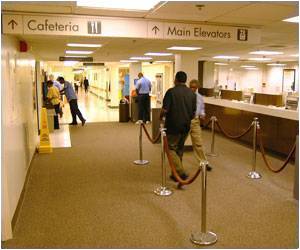The time when the U.S. health system is facing both a worsening shortage of primary care physicians and an increasing demand for primary care services, one broadly recommended strategy has been to increase the number and the responsibilities of nurse practitioners.

A study published in the May 16 New England Journal of Medicine finds, however, that while primary care physicians and nurse practitioners for the most part agreed with the first recommendation, they significantly disagreed about some proposed changes to the scope of nurse practitioners' responsibilities. Specific points of disagreement revealed in the survey – led by investigators from Massachusetts General Hospital (MGH) and the Institute for Medicine and Public Health at Vanderbilt University Medical Center – include appropriate leadership roles for nurse practitioners, reimbursement levels and the overall quality of services they provide.
"We were surprised by the level of disagreement reported between these two groups of professionals," says Karen Donelan, ScD, EdM, of the Mongan Institute for Health Policy at MGH, lead author of the report. "We had hypothesized that, since primary care physicians and nurse practitioners had been working together for many years, that collaboration would lead to more common views about their roles in clinical practice. The data reveal disagreements about fundamental questions of professional roles that need to be resolved for teams to function effectively."
Adds Peter Buerhaus, RN, PhD, director of the Center for Interdisciplinary Health Workforce Studies at Vanderbilt and a co-author of the paper, "It is unsettling that primary care physicians and nurse practitioners, who have been practicing together for several decades, seem so far apart in their perceptions of each other's contributions. I am concerned that these large gaps in perceptions will inhibit efforts to redesign care delivery and to improve the productivity and configuration of the primary care workforce." Additional co-authors of the paper are Catherine DesRoches, DrPh, Mathematica Policy Research, Cambridge, Mass.; and Robert Dittus MD, MPH, Veterans Administration Tennessee Valley Geriatric Research, Education and Clinical Center and Vanderbilt Institute for Medicine and Public Health.
Although debates on the appropriate roles of health professionals are nothing new, the authors note, little data has been available on the roles played by nurse practitioners in primary care and how they differ from those of primary care physicians. The current study was designed to assess those roles and how expanding them might affect the health care system. The survey was mailed to a national random sample of nearly 2,000 primary care clinicians – evenly divided between physicians and nurse practitioners – and responses were received from 467 nurse practitioners and 505 physicians.
The majority of both groups – 96 percent of nurse practitioners and 76 percent of physicians – agreed with the IOM recommendation that nurse practitioners "be able to practice to the full extent of their education and training," and 76 percent of nurse practitioners reported they were doing so. Majorities also agreed that increasing the supply of primary care nurse practitioners would improve the timeliness of and access to care, and respondents working in collaborative practices indicated that both professions provide a wide range of services in their practices.
Advertisement
- 82 percent of nurse practitioners believed they should be able to lead medical homes – practices using a team-based model to deliver coordinated patient care – but only 17 percent of physicians agreed;
- 64 percent of nurse practitioners agreed they should be paid equally for providing the same services, compared with only 4 percent of physicians;
- 60 percent of nurse practitioners in collaborative practices indicated they provided services to complex patients with multiple conditions, but 23 percent of physician in such practices responded that those services were provided by nurse practitioners,
- the two groups disagreed significantly regarding whether an increase in the supply of nurse practitioners would improve patient safety, the effectiveness of care and health costs, with one third of physicians responding that such an increase might have a negative effect on safety and effectiveness.
The investigators note the need for more analysis of the economic implications of expanding nurse practitioner roles and responsibilities, as well as the contribution of nurse practitioners to the care of complex patients. Buerhaus stresses, "At this stage, discussion is critical to finding points of agreement. Several states have workforce commissions that might serve as a forum for primary care physicians, nurse practitioners, payors and even patients to discuss these issues. Our study did not find major differences by states and did not include physician assistants or other allied health professionals, but including everyone in this dialogue will be important."
Advertisement
Source-Eurekalert









